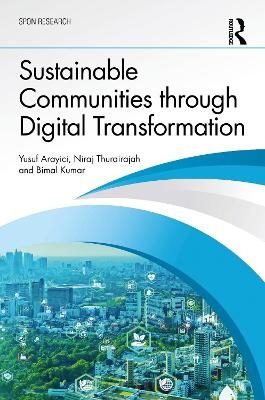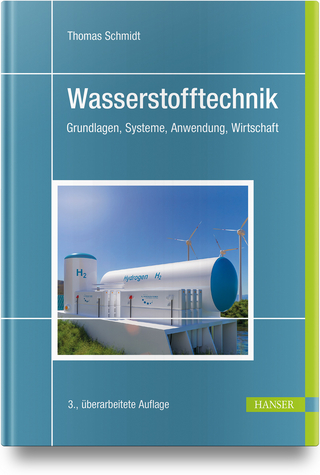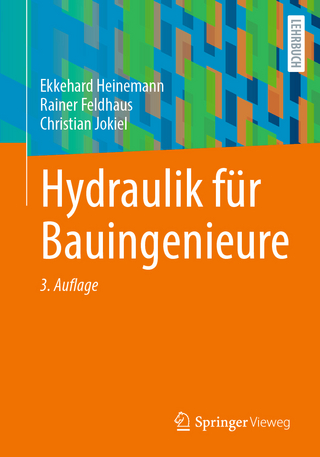
Sustainable Communities through Digital Transformation
Routledge (Verlag)
978-1-032-44903-6 (ISBN)
- Noch nicht erschienen
- Versandkostenfrei
- Auch auf Rechnung
- Artikel merken
· Provide digital/physical working/living environments that anticipate emerging lifestyles
· Blend digital engagements into the physical engagements within the built environment
· Support business and social activity in physical and online venues
· Use advanced information and community-oriented technologies for efficient management of urban services
· Promote sustainability
· Express narratives that celebrate the experience of place and community
· Leverage transformation of educational systems
· Foster linkages between universities, and between universities and businesses
· Facilitate working relationships among small and large companies
· Foster new processes and arrangements for innovation in the built environment
By comparing the key principles of digital transformation with those of sustainable communities, the contributors seek to justify or discount the applicability of digital change for achieving more sustainable communities. The research presented in this book is essential reading for architecture, urban planning, quantity surveying, building surveying, real estate, and construction management professionals and academics.
Yusuf Arayici is Professor of Built Environment at Northumbria University. Since 2000, his research has ranged from building information modelling and process improvement to energy management and sustainability. He has led substantial research groups over a prolonged period through continuous cycles of funded research projects with a sum of £10M, graduated 15 PhDs and many MSc students, and published more than 100 papers and five books about building information modelling. Currently, he is researching on deep learning and cognitive digital twins for healthcare FM and AI-supported heritage BIM. Niraj Thurairajah is Associate Professor of Built Environment at Northumbria University, where he leads the Sustainable Construction Futures research group. His research delves into the complexities of the built environment, focusing on human and process-related aspects. This includes how organisations and individuals navigate technological innovation, apply new economic theories within built environment contexts, and implement decarbonisation strategies to enhance climate resilience. He has authored over 100 peer-reviewed publications covering areas such as the digital built environment, construction economics and procurement, decarbonisation, and education. He played leading roles in research and industry engagement projects such as Green Skills, ORBEE, ACBEE, ExcelDL, ISLAND I & II, CKE, and H2B innovation grants. His work integrates academic rigour with practical industry insights, significantly contributing to the field of sustainable construction. Bimal Kumar is currently Professor of Innovative Digital Construction Technologies at the University of Strathclyde in Glasgow, UK. He leads the Digital Construction, Procurement and Law research group. He is a Fellow of the Institution of Civil Engineers and a Chartered Engineer. He is also a Fellow of the British Computer Society, a Member of the American Society of Civil Engineers and the Institution of Engineers of India, and a Senior Fellow of the UK Higher Education Academy. He is well known for his work on the application of artificial intelligence/knowledge-based systems to structural design – this has resulted in three books and numerous publications. He is also the founding Secretary/Treasurer of the European Group for Structural Engineering Applications of Artificial Intelligence (EG-SEA-AI), now called European Group of Intelligent Computing in Engineering (EG-ICE). His main research interests are the design and development of systems and advanced IT tools to facilitate the integration of the design and construction processes, intelligent buildings, modelling building regulation and codes representation and processing, BIM, and knowledge management in engineering.
Part 1: Introduction
Chapter 1: Introduction
Part 2: Enablers, Tools, and Methods for Physical Sustainability
Chapter 2: Building Information Modelling for Deep Retrofitting of Residential Properties by Stephen Phillips (London Southbank University, UK)
Chapter 3: Enhancing Sustainability through High Performance Weather Adaptive Facades by Kishor Zingre, (Northumbria University, UK)
Chapter 4: Exploring Sustainable FM KPIs and the Role of Digital Twins for Sustainable FM Gökhan Demirdöğen, (Yildiz Technical University, Turkey); Zeynep Işık, (Yildiz Technical University, Turkey); Yusuf Arayici, (Northumbria University, UK)
Chapter 5: Stranded Assets in Built environment: Evaluation of Information in Energy Performance Certificates by Kevin Muldoon-Smith, (Northumbria University, UK); Paul Greenhalgh (Northumbria University, UK); Stephen Philips (London Southbank University, UK)
Part 3: Go Green with Digital for Environmental Sustainability
Chapter 6: The Digital Foundations for Sustainable Social Housing Decarbonisation by Richard Watson, Tara Hipwood and Zahirah Mokhtar Azizi (Northumbria University, UK)
Chapter 7: Promoting Built Asset Flood Resilience for Sustainable Development through Data Advantage by Onaopepo Adeniyi, (Northumbria University, UK)
Chapter 8: Measuring Walkability in the Digital Age: Open-Source Data and Spatial Modelling by Ayse Ozbil Torun, (Northumbria University, UK)
Chapter 9: Dealing with Uncertainties of Embodied Carbon Estimates in the Digital Age by Zaid Alwan & Amalka Ranathungage, (Northumbria University, UK)
Part 4: Waste Removal and Lean Practices with Digital for Economic Sustainability
Chapter 10: Knowledge Pipelines: Coordinating Data and Information in the Digital Built Environment by Kevin Muldoon-Smith, (Northumbria University, UK)
Chapter 11: Critical barriers to blockchain-enabled smart contracts adoption in public-private partnership projects: An exploratory study by Ameyaw Ernest and Bimal Kumar, (Northumbria University, UK)
Chapter 12: Digital Public Procurement Philosophies for SMEs to Function Effectively in Social Housing Projects by Richard Humphrey, (Northumbria University, UK)
Chapter 13: Circular Economy for Sustainable Built Environment through Building Information Modelling by Bahriye Ilhan Jones, (Northumbria University, UK); Hatidza Isanovic, (Istanbul Technical University, Turkey)
Chapter 14: Life Cycle Costing Assessment of Circular Building by Haibo Feng, Tarek Ahmed, (Northumbria University, UK)
Part 5: Values and Inclusivity with Digital for Social Sustainability
Chapter 15: A Multi-Level Perspective View to Sustainable Smart Cities as a Decarbonisation Pathway by Hidayati Ramli, Zahirah Mokhtar Azizi, Niraj Thurairajah, (Northumbria University, UK)
Chapter 16: Rendering the digital future – Understanding the social-spatial perception of dynamic IoT-based activities by Jiayi Jin, (Northumbria University, UK)
Chapter 17: Transforming Perceptions Through Design: How Interactive Technology and Spatial Design Bring Digital Advances to Wider Audiences by Ben Couture and Tarek Ahmed, (Northumbria University, UK)
Chapter 18: Radical Sustainability and Architectural Imagination: Can Digital Technologies Enhance Alternative Narratives of Place? By Nadia Bertolino, Cameron McEwan (Northumbria University, UK)
Part 6: Conclusion
Chapter 19: Summary and Conclusion
| Erscheint lt. Verlag | 16.12.2024 |
|---|---|
| Reihe/Serie | Spon Research |
| Zusatzinfo | 58 Tables, black and white; 97 Line drawings, black and white; 14 Halftones, black and white; 111 Illustrations, black and white |
| Verlagsort | London |
| Sprache | englisch |
| Maße | 156 x 234 mm |
| Themenwelt | Naturwissenschaften ► Biologie ► Ökologie / Naturschutz |
| Naturwissenschaften ► Geowissenschaften ► Geografie / Kartografie | |
| Sozialwissenschaften ► Soziologie ► Spezielle Soziologien | |
| Technik ► Architektur | |
| Technik ► Bauwesen | |
| Technik ► Elektrotechnik / Energietechnik | |
| ISBN-10 | 1-032-44903-9 / 1032449039 |
| ISBN-13 | 978-1-032-44903-6 / 9781032449036 |
| Zustand | Neuware |
| Informationen gemäß Produktsicherheitsverordnung (GPSR) | |
| Haben Sie eine Frage zum Produkt? |
aus dem Bereich


